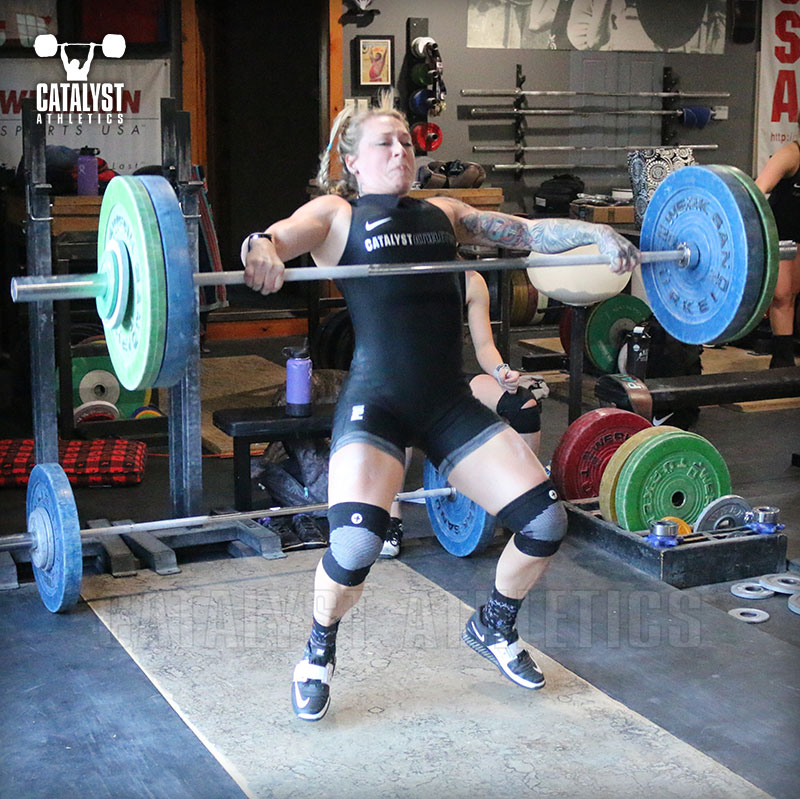Ask Greg: Issue 181

Samantha Asks: My question is a about the timing of getting under the bar in the snatch (and would also apply to the clean). I am someone who is more of a “puller” and not someone who naturally can get under the bar quickly. What are the best drills/methods to learn and practice the timing of the change in direction between the second and third pulls?
Greg Says: First, it’s really important to have a good sense of what a good lift looks and sounds like, and the best way to get that is by watching good lifters lift. Fortunately these days you have access to thousands of free, high-definition videos—watch them. Watch them frequently. Don’t study and scrutinize and analyze—just watch and enjoy. Your brain will absorb what it needs to without your help, which almost always handicaps the process.
Once that motion is well-embedded in your mind unconsciously, it will become increasing natural for your body to mimic it when you’re lifting without your having to consciously try to reproduce it. Watch some video right before you train, and even in between sets.
Next, consider the entire lift one continuous motion. Don’t think if it as pulling up followed by pulling down—it’s one action. Once your legs and hips are extended, you flip a switch and get down, but you continue lifting the bar the entire time.
Warm up every day with a few sets of tall snatches/cleans to train an aggressive, quick pull under the bar into a low position. Then get in a few sets of dip snatch/clean to focus on the timing at the top—these need to be as quick as possible. Quick pop up with the legs and hips, and immediate aggressive pull under just like you did with the tall snatches/cleans before them.
Keep these two exercises light—the point here is to focus on speed and rhythm. Loading them up just means you’ll move slowly and resort to your old habits. Additionally, these are intended to prime you to move properly in any snatches or cleans to follow in your workout, so if you’re not doing them as well as possible, you’re wasting your time.
Greg Says: First, it’s really important to have a good sense of what a good lift looks and sounds like, and the best way to get that is by watching good lifters lift. Fortunately these days you have access to thousands of free, high-definition videos—watch them. Watch them frequently. Don’t study and scrutinize and analyze—just watch and enjoy. Your brain will absorb what it needs to without your help, which almost always handicaps the process.
Once that motion is well-embedded in your mind unconsciously, it will become increasing natural for your body to mimic it when you’re lifting without your having to consciously try to reproduce it. Watch some video right before you train, and even in between sets.
Next, consider the entire lift one continuous motion. Don’t think if it as pulling up followed by pulling down—it’s one action. Once your legs and hips are extended, you flip a switch and get down, but you continue lifting the bar the entire time.
Warm up every day with a few sets of tall snatches/cleans to train an aggressive, quick pull under the bar into a low position. Then get in a few sets of dip snatch/clean to focus on the timing at the top—these need to be as quick as possible. Quick pop up with the legs and hips, and immediate aggressive pull under just like you did with the tall snatches/cleans before them.
Keep these two exercises light—the point here is to focus on speed and rhythm. Loading them up just means you’ll move slowly and resort to your old habits. Additionally, these are intended to prime you to move properly in any snatches or cleans to follow in your workout, so if you’re not doing them as well as possible, you’re wasting your time.
| Greg Everett is the owner of Catalyst Athletics, publisher of The Performance Menu Journal and author of Olympic Weightlifting: A Complete Guide for Athletes & Coaches, Olympic Weightlifting for Sports, and The Portable Greg Everett, and is the writer, director, producer, editor, etc of the independent documentary American Weightlifting. Follow him on Facebook here. |
Search Articles
Article Categories
Sort by Author
Sort by Issue & Date
Article Categories
Sort by Author
Sort by Issue & Date

